In pictures: Perseid meteor shower 2015
- Published
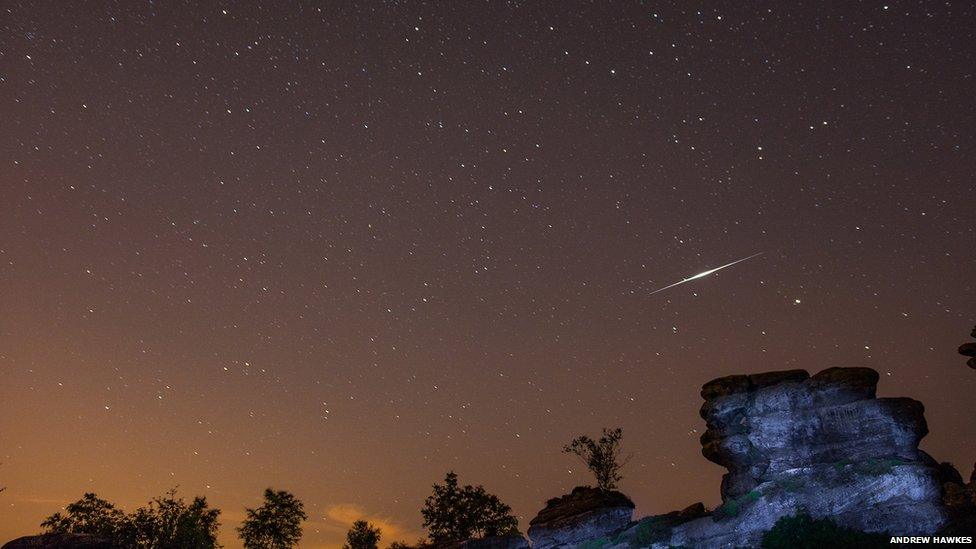
The Perseids are one of the best opportunities for skywatchers to see meteors. This one was captured by Andrew Hawkes, who said: "I've taken a couple of shots this morning at Brimham Rocks in North Yorkshire."
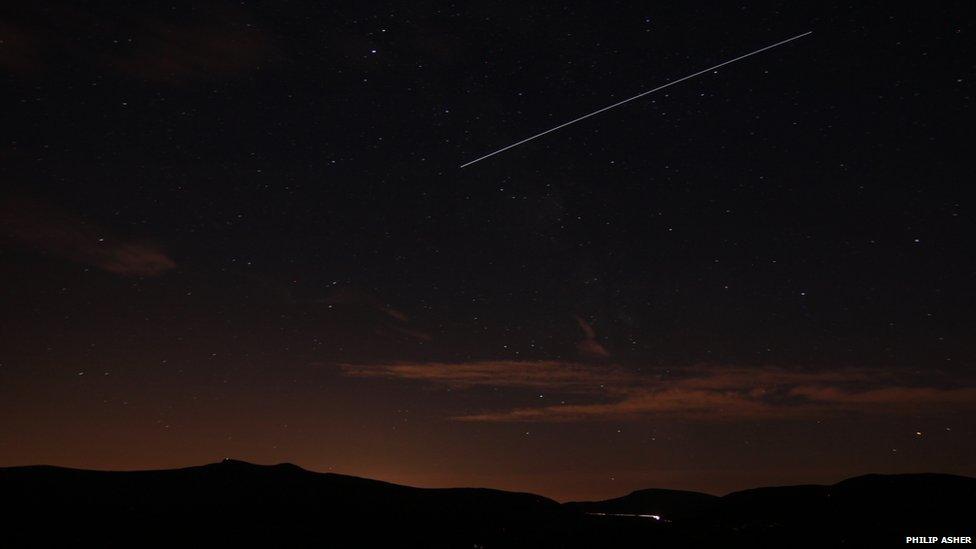
Philip Asher took this picture from the Brecon Beacons in Wales. Particles of ice and dust hit the Earth's atmosphere at 60 km/s (37 miles/s), heating the air and causing the bright streaks seen from the ground.
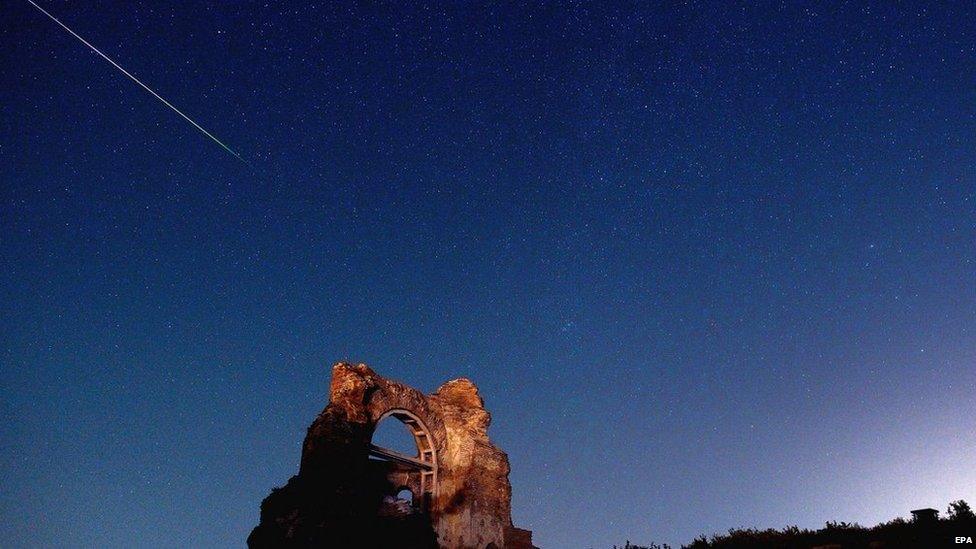
The meteor shower can be seen all over the world. This picture shows a Perseid over the Byzantine "Red Church" basilica near Sofia in Bulgaria.

Here, enthusiasts watch the meteors burn up over the Taunus mountains near Schmitten in Germany in the early hours of 13 August.
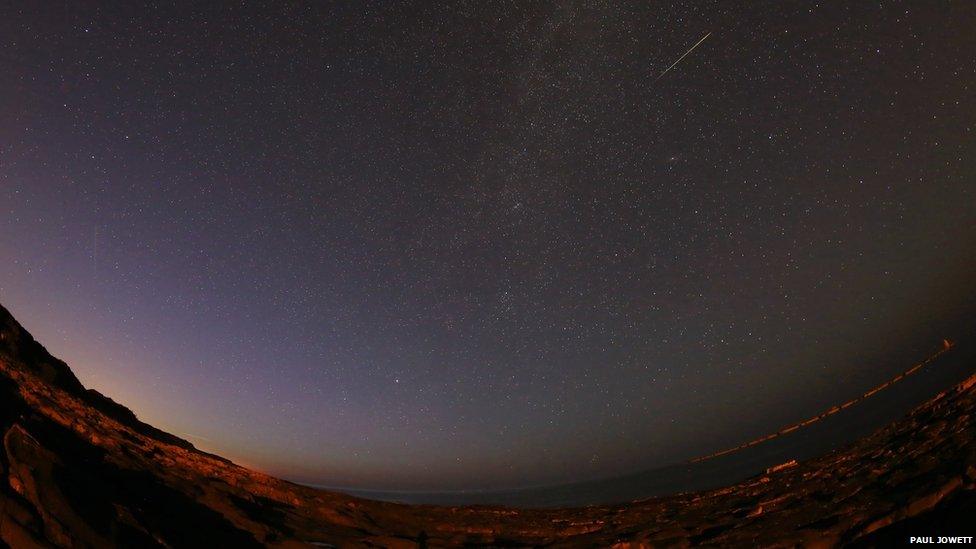
Paul Jowett took this photo on Wednesday evening on the coastline at Craster, Northumberland. He says: "Quite a few people had gathered at the shoreside to watch the spectacle, greeting each meteor with oohs and aahs."
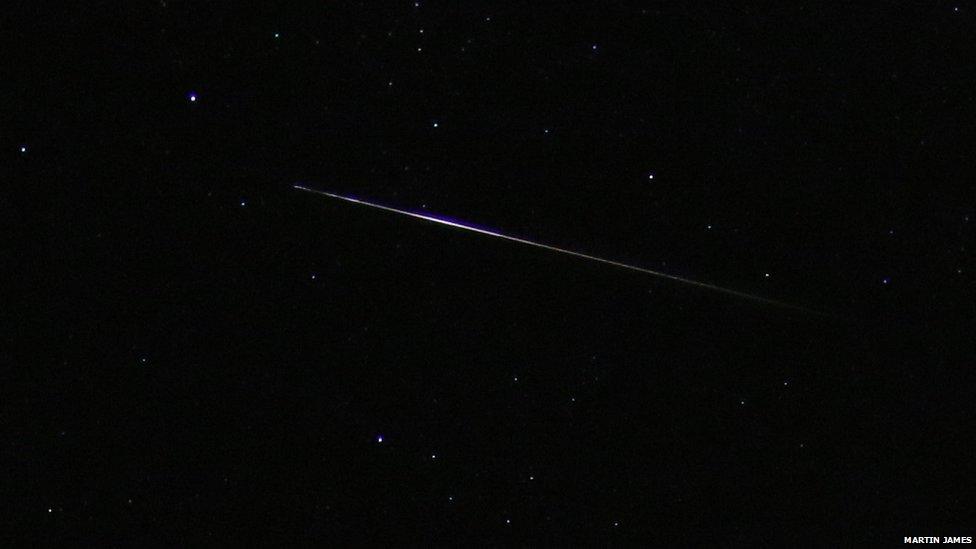
Martin James took this picture of a meteor streaking across the sky. The tiny particles that cause the light show range from the size of a grain of sand to around as big as a pea.
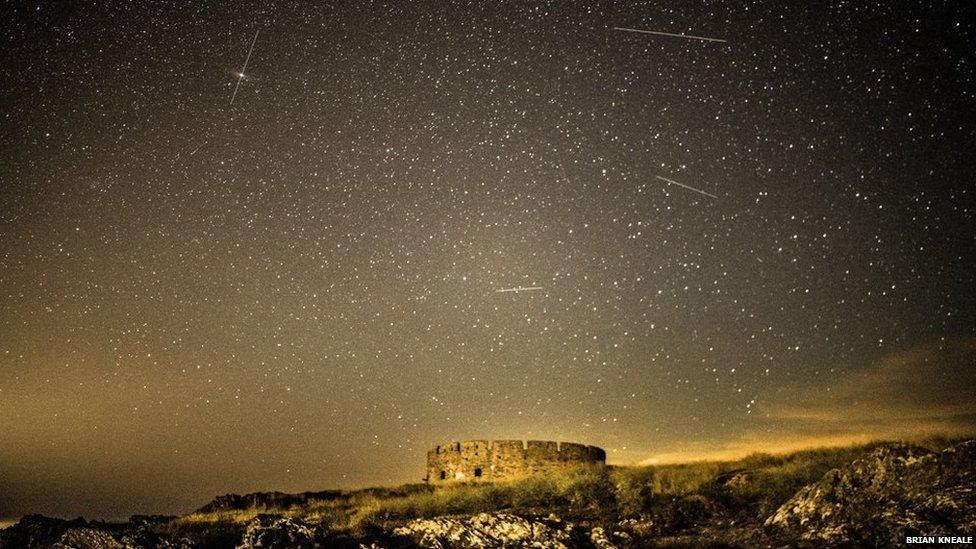
This picture was taken on Wednesday night by Brian Kneale. Meteors are seen streaking over the English Civil War-era stronghold of Derby Fort on St Michael’s Isle in Langness, Isle of Man.
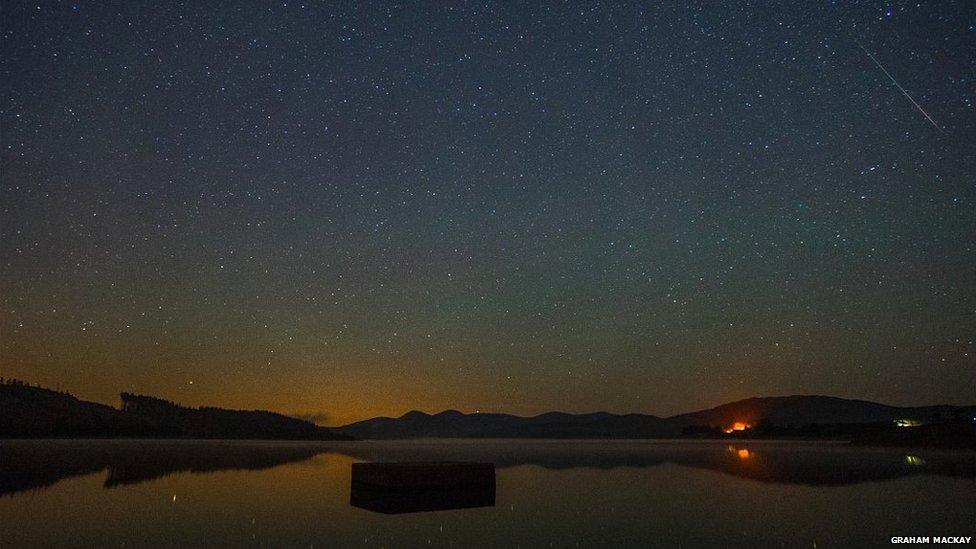
Graham MacKay captured this image beside Loch Doon in the Galloway Valley, which is a registered dark sky site for stargazing. Graham says: "When I got there, to my surprise there were lots of other people wandering around in the dark. At least I could hear people, I just couldn't see them."
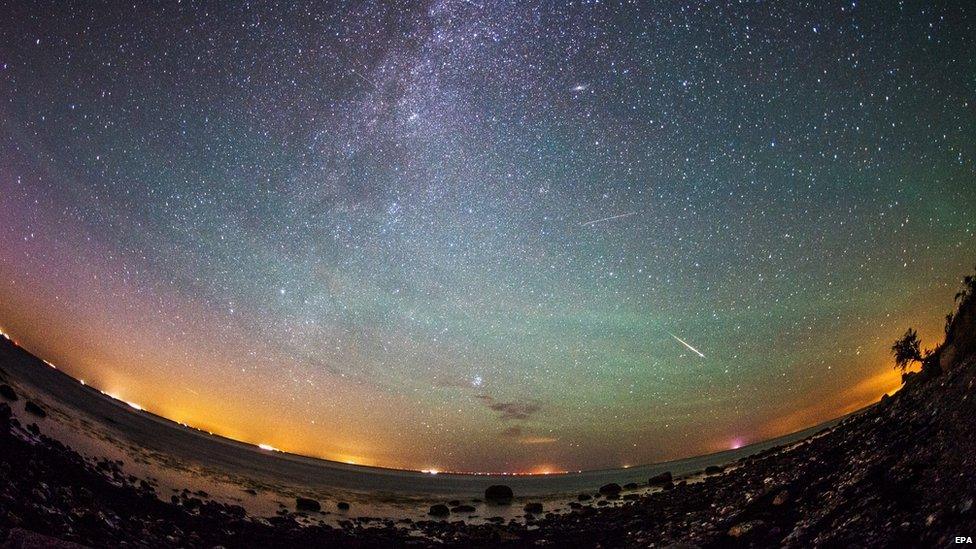
Meteors appear to swarm over the German island of Fehmarn, Germany, against the backdrop of the Milky Way galaxy
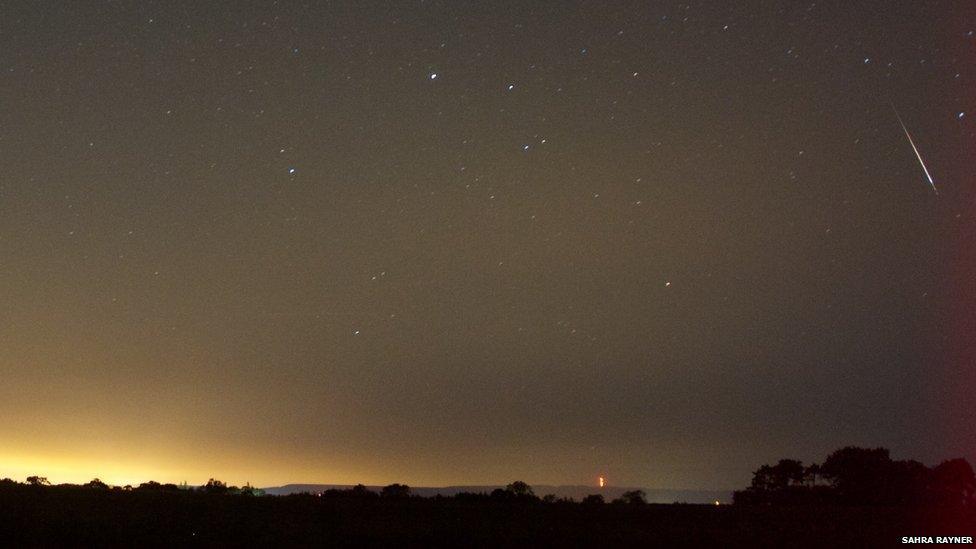
Sahra Rayner took this picture of a Perseid from Salmon Hall in North Yorkshire. The annual Perseid shower occurs when Earth passes through a "river of rubble" left behind by Comet Swift-Tuttle.
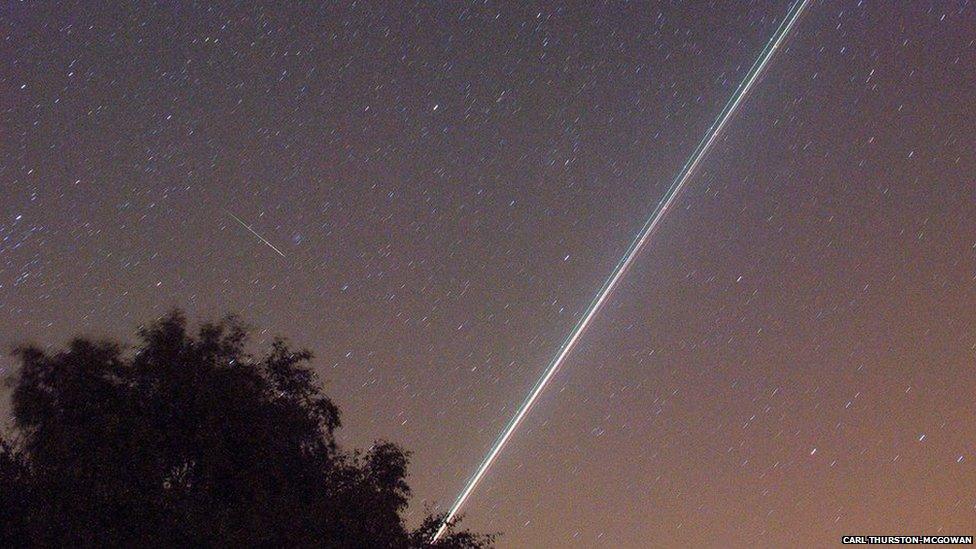
The shower is active each year from around 17 July to 24 August. For most of that period only a few meteors an hour are visible, but that rises to about 100 per hour during the shower's peak - weather permitting.